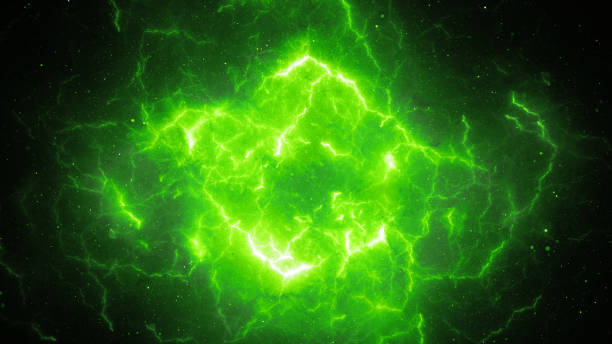Green lightning is one of the most mysterious and awe-inspiring natural phenomena. Often described as rare, green lightning captures the imagination of many who are lucky enough to witness it. With its otherworldly glow, it’s no wonder that people are captivated by this extraordinary spectacle. In this article, we will dive deep into the world of green lightning, exploring its causes, significance, and how it compares to other types of lightning.
Understanding Green Lightning
What is Green Lightning?
At its core, green lightning is a rare optical effect that occurs during thunderstorms. It is often mistaken for regular lightning but with a unique color twist. While lightning strikes typically appear as white or blue-white, green lightning is noted for its bright green hue. This unusual color can appear in a variety of circumstances, such as during specific weather conditions, but it is particularly tied to the properties of light and atmosphere.
The Science Behind Green Lightning
The cause of green lightning is linked to the physics of light scattering. Typically, when lightning strikes, the high-energy discharge ionizes the air, which leads to the visible flash. Under normal conditions, the light from this discharge appears white, as it is a mix of all visible colors. However, under the right circumstances, the presence of certain particles or gases in the atmosphere, such as ozone or specific cloud formations, can cause the light to scatter in such a way that it appears green. The ozone molecules present in the atmosphere absorb certain wavelengths of light, allowing for the green coloration to emerge.
How Does Green Lightning Occur?
While green lightning is not a common occurrence, it happens more frequently than one might think—though its occurrence is often fleeting and not always observed by many. The process typically involves a unique combination of factors:
- Lightning’s Intensity: A particularly strong lightning strike is often necessary for the effect to appear.
- Cloud Composition: The type of clouds involved can affect the way light is scattered.
- Atmospheric Conditions: The presence of ozone, moisture, and specific pollutants in the atmosphere can influence the color of lightning.
- Viewing Location: Since green lightning is a rare phenomenon, it is more likely to be observed in specific areas with the right combination of weather conditions.
The Mystery of Green Lightning

Why is Green Lightning Rare?
Despite being fascinating, green lightning remains an elusive phenomenon. The reason it’s so rare lies in the precise conditions required for its appearance. Many thunderstorms don’t produce the right combination of electrical intensity, atmospheric composition, and viewing angle necessary for the green color to manifest. Even when all the conditions are ideal, green lightning typically lasts only for a split second, making it difficult for observers to catch a glimpse.
Is Green Lightning Dangerous?
When people encounter green lightning, they might wonder whether it’s more dangerous than the standard kind. In reality, green lightning is not inherently more dangerous than typical lightning strikes. The color change does not suggest a different level of energy; it is merely a result of atmospheric conditions affecting how the light is perceived. The real danger with green lightning, as with any type of lightning, lies in its electrical power and the potential for destruction if it strikes nearby.
Historical Perspectives on Green Lightning
In the past, green lightning was often considered an omen or a mystical event. Throughout history, people have associated unusual weather phenomena, including strange lightning colors, with supernatural events or divine messages. This fascination with green lightning persists today, with some attributing special significance to its rare occurrence.
Green Lightning and Thunderstorms
Lightning Types and Green Lightning
There are many different types of lightning, each with its own unique characteristics. Green lightning is typically categorized as a form of cloud-to-ground lightning, although it can occur with other types of strikes as well. The type of lightning that produces the green hue depends heavily on the conditions within the storm.
- Cloud-to-Ground Lightning: This is the most commonly recognized form of lightning and occurs when a discharge occurs between a thundercloud and the ground. Green lightning can be a part of this type of storm.
- Cloud-to-Cloud Lightning: While less common, this type of lightning occurs between two clouds. Green lightning can occasionally appear during this type of storm, although it is rarer.
The Role of Ozone in Green Lightning
One of the main factors that give green lightning its distinctive color is the presence of ozone in the atmosphere. Ozone is a gas that absorbs some of the light emitted by the lightning strike. Under normal conditions, the atmospheric gases scatter light in a way that creates the characteristic white or blue-white flash of lightning. However, when there is a high concentration of ozone or certain chemicals in the air, they can alter the wavelength of light, creating the green hue seen in some rare storms.
The Significance of Green Lightning

Green Lightning in Popular Culture
The striking nature of green lightning has also led to its incorporation into various works of popular culture. From movies and TV shows to literature, green lightning often serves as a dramatic, otherworldly effect. It is typically portrayed as a harbinger of dramatic events or a sign of impending doom, contributing to its mystique and allure.
Green Lightning and Climate Change
Some scientists have raised the question of whether climate change could lead to an increase in unusual weather phenomena such as green lightning. While it is difficult to draw direct correlations, the changing dynamics of the atmosphere and storm patterns could potentially alter the frequency of these rare lightning strikes. As the planet continues to warm and weather patterns shift, it’s possible that green lightning could become a more common occurrence in some regions.
Observing Green Lightning
How to Spot Green Lightning
Catching a glimpse of green lightning requires a combination of luck and timing. If you’re hoping to witness this extraordinary phenomenon, there are a few things you can do to increase your chances:
- Stay in Thunderstorm-prone Areas: Regions with frequent thunderstorms are more likely to see lightning, including the rare green type.
- Monitor Weather Patterns: Pay attention to weather forecasts that predict intense storms, particularly those with a high likelihood of cloud-to-ground lightning.
- Look for Intense Lightning Strikes: The brighter and more intense the lightning, the better your chances of seeing green lightning.
When Does Green Lightning Occur?
Green lightning is most likely to occur during thunderstorms with strong electrical activity. However, it’s also more likely to be seen in the later hours of the day, when the sky is darker. The contrast between the bright green flash and the darkening sky can make the phenomenon more striking and noticeable.
Conclusion
In conclusion, green lightning is a rare and fascinating natural phenomenon that continues to capture the imaginations of those who are lucky enough to witness it. Though it is a scientific event rooted in the scattering of light and atmospheric conditions, the rarity of the occurrence and the stunning visual impact it has make it an unforgettable experience. Whether you’re a storm chaser, a nature enthusiast, or someone who just happens to be in the right place at the right time, the sight of green lightning will undoubtedly leave you in awe of the powerful forces of nature.














